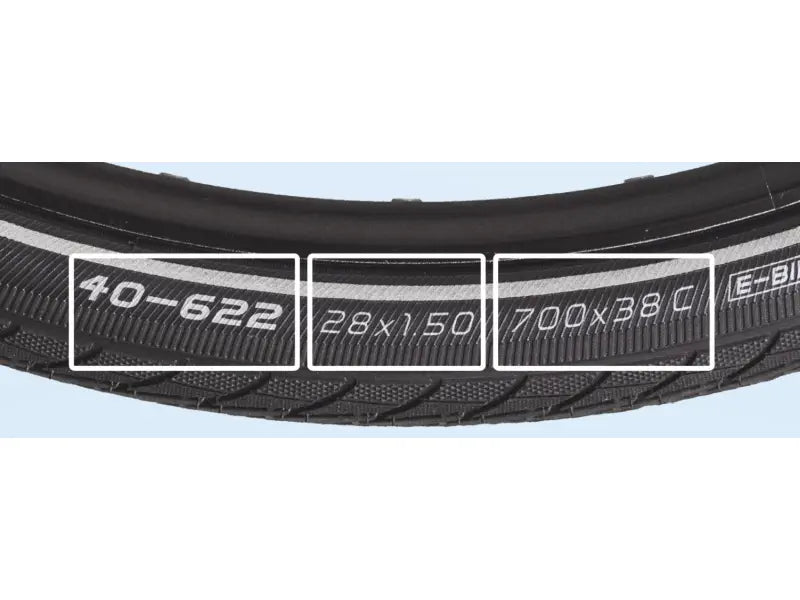
Bike tyre sizes explained
If you look at the sidewall of your bike’s tyres, you will see a series of numbers that refer to it’s size. The numbers are either embossed into the rubber or printed. Some are obvious, some not. If you are changing your tyres it’s essential you pick one that is compatible with your rim. In this article I’ll explain what those numbers actually mean.
Road vs Off-Road, Two Ways
Firstly let’s not sugar coat tyre sizing. Despite trying to standardise itself, it can still be confusing for reasons’ I’ll explain shortly. However it’s important to distinguish sizing methods. Bike tyres often have their size printed in two ways. A standard method which lists the wheel size and tyre by width and ETRTO, a formal standard tyre manufacturers have adopted.
Standard
The standard method is probably the easiest to understand. For road bikes you will see sizes listed in a metric format. eg 700 x 28 which would be a 28mm wide tyre on a 700c wheel. Offroad tyres like MTB tend to use an imperial format eg 29″ x 2.4 which would be a 2.4 inch wide tyre on a 29 inch wheel. Occasionally though, just to confuse us, manufacturers do crossover. eg 650b = 27.5″, 700c = 28″ (which is actually the same size as a 29″!!). Here the approximate outer diameter of the tyres is used and therefore not exact. For example, 26″ wheels can have upto three different diameters of wheel and tyre size. Confusing eh?
- Ebike Tyres and Tubes – Explained
- Exploring the Pros and Cons of Tubeless Tyres on Electric Bikes
- How to change a tyre or fix a puncture
ETRTO
The European Tyre and Rim Technical Organisation (ETRTO) exists to create a formal size standard for rims and tyres across the European Union. However at first glance it isn’t obvious what the numbers mean and you may need to refer to a table to understand them but they are pretty unambiguous.
ETRTO sizing takes the tyre width first then the rim diameter eg. 37-622 is a 37mm wide tyre on a 700c rim. A 700c rim always has a diameter of 622mm. Because rim diameters are exact and unambiguous, if you need a tyre for your wheel, fitting one with the same rim diameter will almost always work. Even in my example above where 26″ wheels can have three different sizes (559mm, 571mm or 590mm), this method removes any confusion.

Other things to consider
So we now know that a quick look at the standard size on a tyre is the easiest to understand but to remove any confusion the ETRTO size will settle it. What these sizes don’t take into account, however, are rim widths. Therefore it’s important to understand that although the rim diameter of, say, a 700c road wheel and 29″ MTB wheel are the same (622mm) a 2.4″ MTB tyre will not work on a road rim because it will be too wide for it. Higher volume (wider) tyres need wider rims and vice versa.
So how do you know what tyre will fit what rim width? It’s a good question and I would say it’s a combination of common sense, perhaps what the tyre manufacturer specifies and the space available between wheel and frame on your bike. First up check and see if the tyre specifies a min/max rim width. If it does, if your rim falls in that range, it will work. Secondly, ask yourself will the tyre fit in your frame if you are going up in size. It’s common for bike/frame manufacturers to specify max tyre widths now so pay attention to those numbers. Thirdly, it may be obvious but you can’t vastly change your tyre width up or down and expect it to just work. Road wheels are narrow, some gravel/touring/hybrid wheels are a bit wider, MTB wheels are the widest for a reason. Look at what you have and what you want and just be realistic. If in doubt, ask a professional who, from experience, will be able to advise you.
